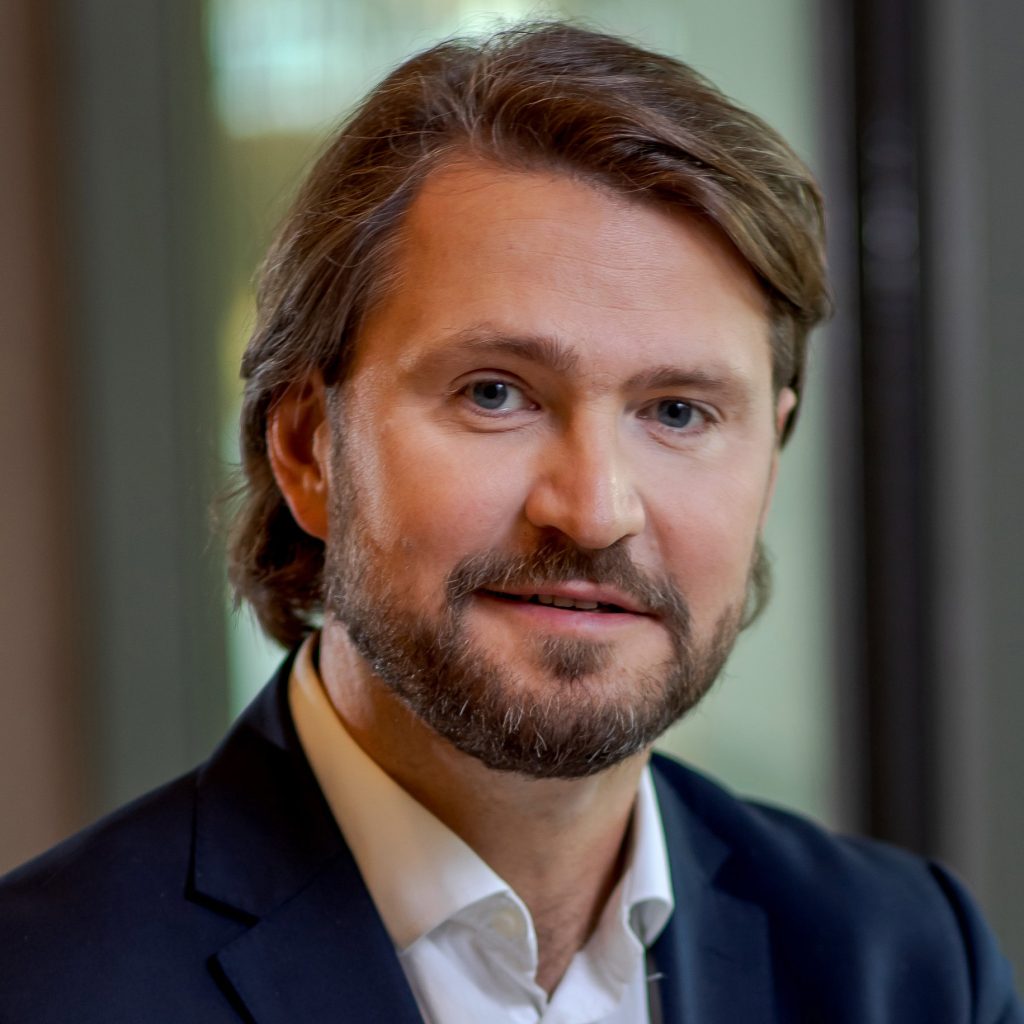Green Europe Today, October 25, 2021.
Author: Tomasz Bułhak
Huge buildings placed in large, gray concrete spaces with no greenery – this is how warehouses and shopping centers are often perceived. However, recent years have brought a significant change in this area. Modern large-scale investments do not necessarily have to have a negative impact on the environment. On the contrary – thanks to innovative solutions, they can contribute to the growth of biodiversity, are able to produce their own energy and remain neutral in terms of CO2 emissions.
Tenants are more and more often paying greater attention to the environmental aspect when considering new locations for thier investment. This is due to both global corporate strategies in this area and pressure from their customers. More and more companies are also paying greater attention to the carbon footprint aspect when approaching the tender process – related to its supply chain process, which overal has an impact on the competitiveness of company in this industry. As a consequence, more and more companies take on a new lease aggreement on condition that the building is compliant with environmental requirements and building standards. The basic guideline for tenants are BREEAM and LEED certificates, which guarantee that the investment was developed with the principle of sustainability, using tools that reduce (and sometimes eliminate) the negative environmental impact of the investment. How is this achieved?
Green warehouses
Strategies adopted by developers active in the warehouse real estate market are in line with the climate goals. One of the most important is achieving Net-Zero.

“ According to Panattoni’s ambitious plan, our company will achieve this goal in 2025. Already this year the company will use 250,000 mWh of green energy to supply 3 million m2 of space in our buildings. Moreover, all new storage projects will, in principle, only be powered by renewable energy. From 2020, each new facility built by Panattoni has undergone a multi-criteria BREEAM certification process at the Very Good level. This cines as a consequence of the implementation of the comprehensive sustainable development strategy “Go Earthwise with Panattoni”, which set a new standard for investment implementation. We are currently in the process of raising the bar even further. From September this year each new hall will have to achieve the Excellent level. We already have two such facilities in Poland – Panattoni Park Sosnowiec I and BTS in Świebodzin built for Amazon – says Emilia Dębowska, Sustainability Manager at Panattoni.
The company’s environmental efforts go beyond simply reducing emissions. – “ Approx. 90% of materials used in the construction process have ecological or recycled credentials. Modern technologies that manage the ventilation system, LED lighting and treatment and redistribution of gray water. Although these solutions require additional investments, as a consequence they lead to significant savings – energy consumption drops by up to 60%. ” – adds Emilia Dębowska.

fot. mat. Panattoni press releases
There are many pro-ecological solutions available apart from those in the standard technical specification tailored to the mentioned BREEAM Excellent level. Tenants can extend them depending on their needs. However, it can be expected that in the long term they will become the generally applicable standard. This includes solar panels installed on the roofs of buildings, which reduce the need for external energy sources. This applies especially to new investments – older facilities were not designed with regard to the high load of the roof slope and their structures are not able to bear the weight of the installation. Ground heat exchangers with heat pumps are an ecological solution for heating buildings. Rainwater is retained, can be used for watering green areas. This practice has a double benefit – in addition to reducing water consumption, it also generates significant savings in the context of the so-called rain tax, i.e. fees for reducing the natural land water levels.

photo. mat. Panattoni press releases
Architects have practically unlimited scope for creativity with regards to the use of greenery in the land development design. Green walls and roofs of buildings, protection of bird habitats, flower meadows instead of short-trimmed lawns or gardens increase biodiversity and enrich the local ecosystem. This is especially valuable in the case of investments that are built in areas with low biological activity, e.g. post-industrial areas. – “ In 2020, as much as 35% of our investments in Poland were brownfield projects. In such cases, we apply a policy of rational land management, we also carry out revitalization and remediation activities ” – says Emilia Dębowska.

photo. mat. Panattoni press releases
Developers also make efforts to ensure that the facilities eing built are friendly not only to the environment, but also to the company’s employees. – “ These activities include for ex., reducing noise and increasing access to daylight, which has a key impact on the well-being of employees. There are also relaxation zones with insect hotels around the buildings ” – adds Emilia Dębowska.
Ecological retail facilities
Large-scale retail properties have many similarities to warehouse halls, which is why the pro-ecological solutions used in them are often similar. An example is a new IKEA store, launched in May 2021 in Szczecin . Thanks to the use of geothermal energy (installation of ground heat exchangers and heat pump), supported by biomass-fired boilers, it is independent of the district heating network.

fot. mat. press releases from Ikea Polska
Energy obtained from the ground using ground heat exchangers is used to heat the facility. They form a closed water circuit, the “heart” of which is the heat pump. Cold water is pumped to a depth of about 100 meters and there it is heated by natural geothermal energy. After that it is pumped to the surface, and after passing through the heat pump, it is used to heat the building and prepare hot water. Contrary to other investments of this type, the circulation does not use glycol, but only water, which is safer for the environment. In summer, geothermal energy will be a natural cooling agent and will support traditional air conditioning. However, in the transitional periods – in spring, autumn and during large temperature differences between day and night – heating and ventilation systems will operate in free-cooling mode. In this mode, heat pumps are turned off and the building is ventilated with fresh air, which cools or heats it depending on the needs. In addition, the heat energy generated by the cooling devices in which the catering part of the IKEA store is equipped will be used to heat the water in the store.

photo. mat. press releases from Ikea Polska
What is also unique is the natural lighting solutions used in the main part of the store – which is possible to achieve thanks to glazing in the facade and numerous skylights. The lens installed in them focuses natural light, illuminating the space. The rainwater is cleaned and used to flush toilets and water plants. Flower meadows were created around the building, the company also invested in numerous plantings of native tree species.
“Positive impact on people, care for the environment and the planet’s dwindling resources, and the transition to a circular economy in 2030 – these are the main goals of our sustainable development strategy People & amp; Planet Positive. The IKEA store in Szczecin, its infrastructure and products on offer, consistently implement these goals. Therefore, we have planned our investment so that it is self-sufficient, does not generate a negative impact on the natural environment and, where possible, maximizes the ecological value of the area. Hence the idea of, among others wild flower meadows next to the shop. Natural, untrimmed grass and wild flowers contribute to increasing the biodiversity of the city’s flora and fauna. We have installed several dozen houses for birds, bats and insects in green areas – says Małgorzata Bochenek, Director of Business Development and Transformation at IKEA Retail in Poland.

photo mat. press releases from Ikea Polska
It is also worth mentioning the positive energy balance – IKEA Retail Sp. z o.o. in Poland, it owns six wind farms that produce more energy than is consumed by the company. In the past financial year (August 2020 – September 2021), IKEA Wind Farms produced 394 GWh, which exceeds the consumption of all Ingka Group units (stores, warehouses, distribution center, shopping centers, offices). Further investments in renewable energy projects are planned and currently under review.
Shopping centers full of life
The owners of shopping centers are also increasingly introducing innovative solutions in the spirit of sustainable development.

photo mat. press releases from Immofinanz
“ We can clearly see that in the reality that surrounds us, the issues of how we run our business, whether we conduct it in a sustainable manner, respecting ecological aspects, are becoming very important. In the IMMOFINANZ activity, we have been paying particular attention to these aspects for many years, both in the office and retail sectors. Recently, we have additionally intensified our activities in the field of sustainable development. In our four Polish shopping centers, VIVO! we carry out a number of activities in this field, both universal for all facilities, as well as individualized, tailored to the specificity of a given center and the needs of the local community. ” – says Magdalena Kowalewska, Country Manager Operations Poland at IMMOFINANZ, responsible for amongst other areasm the development of the VIVO! shopping center brand in Poland.
“Moving on to some examples, we implemented measures resulting in 30% lower water consumption in toilets in our centers, we also replaced lighting with LEDs, thus saving 30% of energy. We segregate waste and plant more and more greenery in the vicinity of our facilities, including one tree for each signed lease contract in a given VIVO!shopping centre” – she adds
In its newest projects, Immofinanz takes care of such details as the construction of houses for insects and birds. They also have their own apiaries in their shopping centers and take advantage of them by organizing workshops on the special role of bees in the ecosystem. To this end, they cooperate with local ecological charities, jointly implementing various types of initiatives.

Observation deck, VIVO! Lublin 
Waterhole for animals, VIVO! Stalowa Wola. 
House for insects on the green terrace, VIVO!
“We also promote health and physical activity, for example by organizing free sports activities on the green roof of VIVO! Lublin, where there is a gym and a recreation area – a space where you can relax after exercising and admire the panorama of Lublin with a beautiful castle in the background. We also try to promote good habits among customers who visit our shopping centers. ” – concludes Magdalena Kowalewska, Country Manager Operations Poland at IMMOFINANZ.
Benefits for the environment, benefits for business
Sustainable growth, although may be costly in the first phase, is associated with specific benefits. First, it contributes to the protection of the environment and counteracts climate change. Secondly, it strengthens the positive image of companies, emphasizing their responsibility for the environment. Thirdly, it is a step towards meeting the ever growing customer expectations, who take their own actions in the area of reducing the negative impact on the environment. Last but not least – they increase the value of buildings. Currently in Poland, approx. 16% of warehouse facilities are certified. This means that we are experiencing just the beginning of a long road towards decarbonization. It is certain, however, that in the long run there is no alternative to the so-called green leases and such contracts will be offered only by developers and owners of buildings that take appropriate care of the environment and surroundings.
It is particularly important that all players in the commercial and warehouse real estate market are aware of their role in the process of environmental protection and become agents of positive changes. Especially that the facilities they build are and will be needed. Without access to warehouses, consumers would not have access to goods, and without shopping centers, they would not be able to buy them freely. Everyone: developers, tenants and local communities will benefit from ecological, energy-saving solutions, built with a low carbon footprint and in a way that supports biodiversity. Especially our climate.
Written by:

Tomasz Bułhak – Chief Analyst, Green Europe Today
Tomasz Bułhak is currently working with the business, preparing comprehensive analyzes and providing marketing support. Actively monitors changes resulting from new trends and pro-ecological regulations and their impact on the business. For several years he worked in managerial positions in international companies from the automotive sector. He studied Journalism at the University of Warsaw.
Expert commentary:

Emilia Dębowska – Sustainability Manager w Panattoni
Emilia Dębowska has worked in the real estate industry for almost 15 years and has worked for representatives of the industrial, commercial and residential sectors. She helped support, among others Metro Properties, BNP Paribas Real Estate and Bank BPH. She has been working for Panattoni since May 2015, currently holding the position of Sustainability Manager. She holds a WSB-National Louis University diploma (marketing and management). She completed post-graduate studies at the College of Management and Finance of the Warsaw School of Economics, and recently at the University of Cambridge in the field of Business Sustainability Management.

Małgorzata Bochenek – Director of Business Development and Transformation, IKEA Retail Polska
Passionate about people and innovation, who believes that sky is not the limit. From the beginning of her professional career she has been associated with the HR area in the financial sector, then from 2015 at IKEA Retail Poland. From 2018, responsible for the development of the innovation area, from July 2019 for the Business Development area, which focuses on expansions, innovations and sustainable development. A graduate of the University of Warsaw and Hogskolan Dalarna in Sweden, as well as post-graduate studies in Human Management at the Company at the L. Koźminski Academy in Warsaw.

Magdalena Kowalewska – Country Manager Operations, Management Board Member at IMMOFINANZ Poland
Before joining IMMOFINANZ, between 2002-2007 she worked as a Property Manager in the Belgian commercial real estate development company Liebrecht & amp; wooD . Magdalena Kowalewska is a graduate of Marketing at the University of Chicago, International Economic Relations at the Warsaw School of Economics and English Studies at the Jan Kochanowski University in Kielce. Currently, she is responsible for all operational departments of IMMOFINANZ in Poland: Asset Management, Leasing, Development and Center Management. During the last years of her work, she successfully implemented the development strategy of three IMMOFINANZ brands: the myhive office brand, the STOP SHOP brand of retail parks and VIVO! shopping centers.










